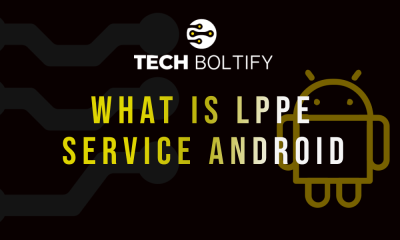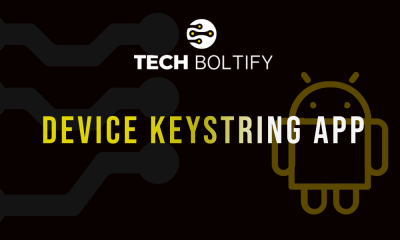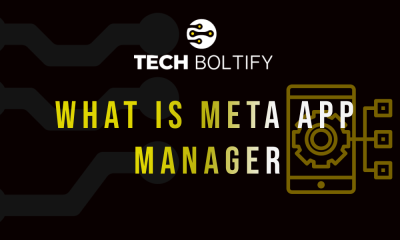Tech
Open-Source vs. Proprietary Machine Learning Solutions: Which One is Right for You
The code for open AI models is openly accessible, enabling anybody to view and alter the model. Although this method fosters greater collaboration and transparency, it may result in fewer updates and less robust data security. Machine learning solutions are expected to grow from $26.03 billion in 2023 to $225.91 billion by 2030, at a CAGR of 36.2%. Although open-source AI models are usually free, additional features or support may incur fees.
The customizability and collaboration potential of closed-source AI models are limited by their proprietary code, which is exclusive to the AI development company. Though updates are usually frequent, security is marginally higher because it’s maintained internally. Such an approach results in minimal transparency and limited insight into data handling procedures. Licensing and access fees are nearly invariably associated with closed-source AI models.
Despite their significant differences, each solution still has benefits and drawbacks. Knowing these will enable you to choose the strategy that best suits your company’s requirements.
Open-Source AI Models: What Are They?
Open-source AI models are freely and publicly available for developers to utilize for various tasks.
A good example of an open-source AI model is GPT-Neo. This model is comparable to ChatGPT, which can process and produce text that appears human. GPT-Neo, which is based on open-source code, is a step in the direction of increasing accessibility to sophisticated AI technologies.
Another excellent example is OpenAI’s CLIP, an open-source AI model that links text and images to facilitate tasks like classification and zero-shot learning.
Proprietary AI Models: What Are They?
Systems that are proprietary and maintain the confidentiality of their code are known as closed-source models. An enterprise AI development company that develops closed-source AI models provides greater control over the system by limiting access to the underlying code.
GPT-4, a language model with sophisticated natural language interpretation and generation capabilities, is the most well-known closed-source AI model.
Gemini is yet another excellent example. Google created this AI model to compete with OpenAI’s GPT-4 and other models that can produce text that looks human. It aims to provide people worldwide with strong and adaptable machine learning solutions.
Essential Things for Businesses to Know About Open-Source vs. Proprietary Models
The next thing to think about is whether to use proprietary or open-source models. The following crucial elements from the field should be kept in mind:
Quick Start, Long-Term Trade-offs with Proprietary Models
Proprietary models accessed via APIs provide enterprise-level support and a faster time to market. These machine-learning solutions are perfect for companies that want to implement AI quickly without requiring much in-house knowledge.
Regular updates and support: The makers of closed AI systems provide regular updates and committed support, which guarantees dependability.
Increased security: A more controlled environment results from maintaining the confidentiality of the AI model’s code.
Simplified deployment: Closed-source solutions often include thorough documentation and an intuitive interface that facilitates and expedites the integration process.
Quality assurance: By maintaining quality control, developers make sure the model satisfies industry requirements.
But as businesses grow, it becomes clear that proprietary models have limitations:
Data privacy: Sending private information to other companies is frequently necessary for customization, which raises security concerns.
Prices: Pay-per-use pricing may seem alluring initially, but as AI adoption increases, the prices may soon skyrocket.
Vendor Dependency: Companies rely on outside infrastructure for dependability and uptime, which might provide operational risks if a vendor goes down.
Open-source models: Cost-effectiveness, flexibility, and control
Conversely, open-source models provide companies with complete command over their AI setup. Businesses can customize AI performance to meet particular requirements by leveraging confidential data to refine these models without disclosing private information to third parties.
Customization: By allowing for extensive customization, open-source models can be improved to better suit applications unique to a particular industry.
Speed: Because the models are adaptable, they can also be optimized based on system specifications and latency.
Cost-effectiveness: Businesses can avoid the rising inference expenses linked to usage-based proprietary models by implementing models on-premises.
Flexibility: Open-source models provide complete scalability at the business’s pace and may be used on any infrastructure, including cloud, hybrid, and on-premises settings.
Ultimately, open-source models’ strength lies in their versatility rather than only their affordability or ease of use. In the long run, firms can innovate more quickly and more affordably by investing in fine-tuning with private data that supports strategic objectives.
But there are drawbacks to open-source as well:
Orchestration at Scale: Because open-source AI models are dynamic, expanding your AI footprint frequently calls for complex orchestration. Policies and cluster-optimized resource allocation are necessary for managing numerous models across teams and hardware infrastructures.
Upfront Investment: Although open-source approaches are frequently free, companies may have to pay upfront to build the required knowledge and infrastructure.
Considerations for Licensing: Commercial use of open-source AI models isn’t necessarily free. Some deployments, like Mistral AI’s, have unique licensing that must be paid for. Before use, always review the licensing terms.
Numerous tools and solutions, both commercial and open-source, have been developed to address these issues and make using open-source models easier.
Choosing Between Open-Source and Proprietary Machine Learning Solutions
Now that we are better aware of the benefits and drawbacks of both worlds, let’s examine the crucial issues and factors that genuinely count when making a decision:
“So, which model should I choose?”
You can’t just choose the right model off the shelf. Focus on trying several models on your data rather than looking for the ideal fit. Compare the outcomes to determine which one best suits your use case. Hugging Faces and other public leaderboards are excellent places to assess models for various tasks. To find out which machine learning solutions work best for your particular requirements, it’s crucial to establish internal benchmarks based on your data.
The Myth of “Bigger is Better”: The Significance of Fine-Tuning
There is a widespread misperception that larger models invariably perform better. On the other hand, LLaMA-3 405B and other basic models perform various functions without specialization. When tailored for specific use cases, like processing legal documents or interpreting financial reports, smaller models—like LLaMA-3 8B—often perform better than larger ones. How effectively the model fits your business demands is more important than its size.
Personalization: The Secret to Successful AI
To elaborate on the last point, fine-tuning turns the basic models from generalists into specialists who perform better in specific domains by training them on domain-specific data. This enables organizations to derive insights from their data helpfully.
A basic AI model, for instance, may comprehend plain language, but unless you customize it using your unique data, it won’t be proficient in legalese or financial analysis. AI gives you a competitive edge in this customization, enabling you to automate processes, enhance decision-making, and spur innovation in the most important ways for your company.
Conclusion
Open-source models provide a clear approach for businesses seeking more control, flexibility, and cost-effectiveness. In contrast to proprietary models, which frequently have restricted customization options, significant scaling costs, and a reliance on external infrastructure, open-source solutions return control to you. Machine learning solutions may be refined and deployed on your terms, whether in a hybrid arrangement, on-premises, or in the cloud, giving you the flexibility to innovate at your speed.
Although the question “Which model should I choose?” may not have a definitive answer, choosing the right AI development company can give you a better idea of where to seek guidance when making these choices.
Tech
The Complete Guide to AI Comment Classification: Spam, Slander, Objections & Buyers
Meta ad comment sections are unpredictable environments. They attract a mix of users—some legitimate, some harmful, some automated, and some simply confused. For years, brands relied on manual review or simple keyword filters, but modern comment ecosystems require more advanced systems.
Enter AI comment classification.
AI classification engines evaluate language patterns, sentiment, intention, and user context. They categorize comments instantly so brands can prioritize what matters and protect what’s most important: trust, clarity, and conversion.
The Four Major Comment Types
1. Spam & Bots
These include cryptocurrency scams, fake giveaways, bot‑generated comments, and low‑value promotional content. Spam misleads users and diminishes ad quality. AI detects suspicious phrasing, repetitive patterns, and known spam signatures.
2. Toxicity & Slander
These comments contain profanity, hostility, misinformation, or attempts to damage your brand. Left unmoderated, they erode trust and push warm buyers away. AI identifies sentiment, aggression, and unsafe topics with high accuracy.
3. Buyer Questions & Objections
These represent your highest-value engagement. Users ask about pricing, delivery, sizing, guarantees, features, or compatibility. Fast response times dramatically increase conversion likelihood. AI ensures instant clarification.
4. Warm Leads Ready to Convert
Some comments come from buyers expressing clear intent—“I want this,” “How do I order?”, or “Where do I sign up?” AI recognizes purchase language and moves these users to the top of the priority stack.
Why AI Is Necessary Today
Keyword lists fail because modern users express intent in creative, informal, or misspelled ways. AI models understand context and adapt to evolving language trends. They learn patterns of deception, sentiment clues, emotional cues, and buyer intent signals.
AI classification reduces the burden on marketing teams and ensures consistent and scalable comment management.
How Classification Improves Paid Media Performance
• Clean threads improve brand perception
• Toxicity removal increases user trust
• Fast responses increase activation rate
• Meta rewards high-quality engagement
• Sales teams receive properly filtered leads
For brands spending heavily on paid social, classification isn’t optional—it’s foundational.
Tech
How To Bridge Front-End Design And Backend Functionality With Smarter API Strategy
Introduction: Building More Than Just Screens
We’ve all seen apps that look sharp but crumble the moment users push beyond the basics. A flawless interface without strong connections underneath is like a bridge built for looks but not for weight. That’s why APIs sit at the heart of modern software. They don’t just move data; they set the rules for how design and logic cooperate. When APIs are clear, tested, and secure, the front-end feels smooth, and the backend stays reliable.
The reality is that designing those connections isn’t just “coding.” It’s product thinking. Developers have to consider user flows, performance, and future scale. It’s about more than endpoints; it’s about creating a system that’s flexible yet stable. That mindset also means knowing when to bring in a full-stack team that already has the tools, patterns, and experience to move fast without cutting corners.
Here’s where you should check Uruit’s website. By focusing on robust API strategy and integration, teams gain the edge to deliver features user’s trust. In this article, we’ll unpack how to think like a product engineer, why APIs are the real bridge between design and functionality, and when it makes sense to call in expert support for secure, scalable development.
How To Define An API Strategy That Supports Product Goals
You need an API plan tied to what the product must do. Start with user journeys and map data needs. Keep endpoints small and predictable. Use versioning from day one so changes don’t break clients. Document behavior clearly and keep examples short. Design for errors — clients will expect consistent messages and codes. Build simple contracts that both front-end and backend teams agree on. Run small integration tests that mimic real flows, not just happy paths. Automate tests and include them in CI. Keep latency in mind; slow APIs kill UX. Think about security early: auth, rate limits, and input checks. Monitor the API in production and set alerts for key failures. Iterate the API based on real use, not guesses. Keep backward compatibility where possible. Make the API easy to mock for front-end developers. Celebrate small wins when a new endpoint behaves as promised.
- Map user journeys to API endpoints.
- Use semantic versioning for breaking changes.
- Provide simple, copy-paste examples for developers.
- Automate integration tests in CI.
- Monitor response times and error rates.
What To Do When Front-End and Backend Teams Don’t Speak the Same Language
It happens. Designers think in pixels, engineers think in data. Your job is to make a shared language. Start by writing small API contracts in plain text. Run a short workshop to align on fields, types, and error handling. Give front-end teams mocked endpoints to work against while the backend is built. Use contract tests to ensure the real API matches the mock. Keep communication frequent and focused — short syncs beat long meetings. Share acceptance criteria for features in user-story form. Track integration issues in a single list so nothing gets lost. If you find repeated mismatches, freeze the contract and iterate carefully. Teach both teams basic testing so they can verify work quickly. Keep the feedback loop tight and friendly; blame only the problem, not people.
- Create plain-language API contracts.
- Provide mocked endpoints for front-end use.
- Contract tests between teams.
- Hold short, recurring integration syncs.
- Keep a single backlog for integration bugs.
Why You Should Think Like a Product Engineer, Not Just A Coder
Thinking like a product engineer changes priorities. You care about outcomes: conversion, help clicks, retention. That shifts API choices — you favor reliability and clear errors over fancy features. You design endpoints for real flows, not theoretical ones. You measure impact: did a change reduce load time or drop errors? You plan rollouts that let you test with a small cohort first. You treat security, observability, and recoverability as product features. You ask hard questions: what happens if this service fails? How will the UI show partial data? You choose trade-offs that help users, not just satisfy a design spec. That mindset also tells you when to hire outside help: when speed, scale, or compliance exceeds your team’s current reach. A partner can bring patterns, reusable components, and a proven process to get you shipping faster with less risk.
- Prioritize outcomes over features.
- Measure the user impact of API changes.
- Treat observability and recovery as product features.
- Plan gradual rollouts and feature flags.
- Know when to add external expertise.
How We Help and What to Do Next
We stand with teams that want fewer surprises and faster launches. We help define API strategy, write clear contracts, and build secure, testable endpoints that front-end teams can rely on. We also mentor teams to run their own contract tests and monitoring. If you want a quick start, map one critical user flow, and we’ll help you design the API contract for it. If you prefer to scale, we can join as an extended team and help ship several flows in parallel. We stick to plain language, measurable goals, and steady progress.
- Pick one key user flow to stabilize first.
- Create a minimal API contract and mock it.
- Add contract tests and CI guards.
- Monitor once live and iterate weekly.
- Consider partnering for larger-scale or compliance needs.
Ready To Move Forward?
We’re ready to work with you to make design and engineering speak the same language. Let’s focus on one flow, make it reliable, and then expand. You’ll get fewer regressions, faster sprints, and happier users. If you want to reduce risk and ship with confidence, reach out, and we’ll map the first steps together.
Tech
Which SEO Services Are Actually Worth Outsourcing? Let’s Talk Real-World Wins
Okay, raise your hand if you thought SEO just meant stuffing keywords into blog posts and calling it a day. (Don’t worry, we’ve all been there.) Running a business comes with enough hats already, and when it comes to digital stuff, there’s only so much you can do on your own before your brain starts melting. The world of SEO moves quick, gets technical fast, and—honestly—a lot of it’s best left to the pros. Not everything, but definitely more than people expect. So, let’s go through a few of those SEO services you might want to hand off if you’re looking to get found by the right folks, minus the headaches.
Technical SEO—More Than Just Fancy Talk
If you’ve ever seen a message saying your website’s “not secure” or it takes ages to load, yeah, that’s technical SEO waving a big red flag. This stuff lives under the hood: page speed, mobile-friendliness, fixing broken links, and getting those little schema markup things in place so search engines understand what the heck your pages are about.
You could spend hours (days) learning this on YouTube or DIY blogs, but hiring a specialist—someone who does this all day—saves you a load of stress and guesswork. Sites like Search Engine Journal dig into why outsourcing makes sense, and honestly, after one too many late-night plugin disasters, I’m convinced.
Content Writing and On-Page Optimization (Because Words Matter)
Let’s not dance around it: great content still rules. But search-friendly content is a different beast. It needs to hit the right length, work in keywords naturally, answer genuine questions, and actually keep visitors hooked. Outsourcing writing, especially to someone who actually cares about your brand’s tone, is worth it for most of us.
On-page SEO, which is tweaking all those little details like titles, descriptions, internal links, and image alt text, is a time-eater. It’s simple once you get the hang of it, but when you’re trying to grow, outsourcing makes the most sense.
Link Building—Trickier Than It Looks
Here’s where things get a bit spicy. Backlinks are essential, but earning good ones (not spammy or shady stuff) takes relationship-building, tons of outreach, and real patience. You can spend all month sending emails hoping someone will give your guide a shout-out, or you can just hire folks with connections and a process. Just watch out for anyone promising “hundreds of links for dirt cheap”—that’s usually a shortcut to trouble.
Local SEO—Getting Seen in Your Own Backyard
Ever tried showing up for “pizza near me” only to find yourself on page 7? Local SEO isn’t magic, but it takes a special touch: optimizing your Google Business Profile, gathering reviews, and making sure your info matches everywhere. It’s honestly a job in itself, and most small teams find it way easier to have a local SEO pro jump in a few hours a month.
Reporting and Analytics—Don’t Go Blind
Last, don’t skip out on real reporting. If nobody’s tracking what’s working—and what’s not—you’re just flying blind. Outsourced SEO pros come armed with tools and real insights, so you can see if your money’s going somewhere or just swirling down the drain.
Wrapping Up—Be Realistic, Outsource Smarter
You’re good at what you do, but SEO is more like ten jobs rolled into one. Outsource the parts that zap your time or make your brain itch, and keep what you enjoy. Focus on the wins (more leads, higher rankings, fewer headaches), and watch your business get the attention it deserves.
-
Tech1 year ago
AI and Freight Management
-

 Tech2 years ago
Tech2 years agoLPPe Service Android App and its Functions – How to Remove it
-

 Tech1 year ago
Tech1 year agoWhat is a Permission Controller – Control Manager Notifications
-

 Tech2 years ago
Tech2 years agoWhat is Device Keystring App On Android
-

 Tech2 years ago
Tech2 years agoWhat is Carrier Hub – How to Resolve Processing Requests Issues
-

 Tech2 years ago
Tech2 years agoWhat is Summit IMS Service – How to Stop Syncing on Your Android Device
-

 Tech2 years ago
Tech2 years agoMeta App Manager – What is Meta App Installer
-

 Tech2 years ago
Tech2 years agoWhat is Cameralyzer Samsung – How to Fix or Uninstall Cameralyzer on Android

